
African-American hairstyles have demonstrated both defiance and sophistication. In the late 1960s and 1970s Afros were considered expressions of cultural identity as well as a rebellion against conforming to the beauty norms of white culture. Today, African-Americans have created exotic, new Afros that grace the pages of mainstream fashion magazines, celebrating their culture throughout the world.
Twists
Twists, when applied to an Afro, can add dimension. Curls can be shaped close to the head in rows, or let loose in wild, Afro style. To achieve the right effect, you can begin by separating the hair and creating twists that can hang in different lengths or be partially brushed out for buoyant, free-form curls.
Roller-Set Afros
Roller-set Afros have the volume of Afros, but without the tight curl. The hair is shampooed and conditioned and divided into segments before setting on large rollers to dry. The process is also called "wet setting." A roller set maintains the fullness of the Afro with sophisticated style.
Afro Puffs
Afro puffs are a variation of a traditional Afro. They are made by parting the natural hair down the middle into two sections and wrapping a rubber band or hair elastic around the base of each segment of hair. Curls of each puff are brushed upward. Conditioner is often applied to add extra whimsy and puffiness.
Bantu Knots
Bantu Knots incorporate the styling of braids and twists, and extend from the head to resemble segmented Afro curls or knots. A Bantu knot is made by combing the hair into small sections about an inch apart. Gel is applied and the curls are twisted around a finger and tucked under the twist with a bobby-pin. The process is repeated until the little knots or twists cover the entire head.
Related Articles

How to Curl a Pixie Cut
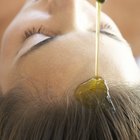
Homemade Treatments to Make Hair Thicker
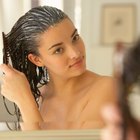
How to Make Extensions Smooth & Silky ...

Wavy Perm Hairstyles

How to Get Frizz-Free Hair When Your ...

Traditional Spanish Hairstyles

Difference Between Hair Glaze & Hair ...
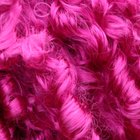
How to Make a Straight Wig Curly
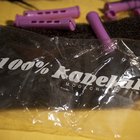
How to Curl Kanekalon

How to Blow-Dry Afro Hair

How to Moisturize Curly Extensions

How to Preserve Curls Overnight

How to Pin Curl Short Hair

How to Get the Look of Dreads Without ...

Old-Fashioned Ways to Curl Long Hair

How to Take Care of a Wet & Wavy Weave
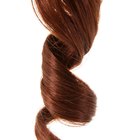
How to Make a Human Hair Weave Soft ...
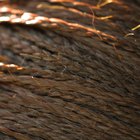
How to Braid Yaki Kanekalon Hair

How to Do a Blow-Dry Wrap

How to Style a Kanekalon Wig
References
Writer Bio
Dan Boone has been writing since 1999. His work has appeared on CaribbeanChannel.com and he wrote for the "Virgin Voice" magazine and its website, Virgin Voices. Boone has a Bachelor of Arts in composition and arranging from Berklee College of Music in Boston. He also holds a certificate in digital-sound engineering from the Trebas Institute in Montreal.
Photo Credits
Comstock Images/Comstock/Getty Images